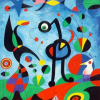First a quote from Wikipedia, for a general overview of the subject:
Biomarkers of aging
Biomarkers of aging are biomarkers that better predict functional capacity at a later age than chronological age.[1] Stated another way, biomarkers of aging would give the true "biological age", which may be different from the chronological age.
Validated biomarkers of aging would allow for testing interventions to extend lifespan, because changes in the biomarkers would be observable throughout the lifespan of the organism.[1] Ideally, biomarkers of aging should assay the biological process of ageing and not a predisposition to disease, should cause a minimal amount of trauma to assay in the organism, and should be reproducibly measurable during a short interval compared to the lifespan of the organism.[1]
Although graying of hair increases with age,[2] hair graying cannot be called a biomarker of ageing. Similarly, skin wrinkles and other common changes seen with aging are not better indicators of future functionality than chronological age. Biogerontologists have continued efforts to find and validate biomarkers of aging, but success thus far has been limited. Although maximum lifespan would be a means of validating biomarkers of aging, it would not be a practical means for long-lived species such as humans.[3] Levels of CD4 and CD8 memory T cells and naive T cells have been used to give good predictions of the expected lifespan of middle-aged mice.[4]
- George T. Baker, III and Richard L. Sprott (1988). "Biomarkers of aging". EXPERIMENTAL GERONTOLOGY 23 (4-5): 223–239. PMID 3197777.
...
Just another example of how this type of project is being duplicated elsewhere. This idea has been floating around for decades yet no one has "broke through" to capture a larger audience, to make the science of aging more understandable, accessible, and intuitive (you can find a whole lot of complicated schematics though). The is why we HAVE to succeed in jump starting it here!
I just wanted to point everyone to this current effort as well: http://www.denigma.de/ontology/graph
It is pretty much everything we could hope for, however, it definitely needs the "eye-candy" factor. The graphic is great however, we need it to be interactive and intuitive for non-tech people. I wonder if there is a way to make it 3-dimensional. It should have an expert/mode level and a more simplified level (a "gamified" version).
I also want to again note the "engagement" factor and the potential "what can I do" elements of the project. If you talk to Aubrey or other people focused on engineering an end to biological aging, they would say we already know enough to begin rejuvenation therapies, that "aging schematics" might be a waste of time, however, I do not think this to be the case. A properly done, detailed, and more engaging presentation about what aging is and how it happens has the potential to draw more people into the fold, young and old alike. More researchers, more donations, and more understanding will hopefully accelerate the pace of discovery and eventual biological rejuvenation.
We are open to ideas for "gamification" at different levels of the schematic. If something is useful AND entertaining, it is more likely to catch a wider audience. The entertainment factor is of course secondary but should not be ignored.
A quote of mine from the 'Bioscience/Young Blood Reverses Signs of Aging in Old Mice' topic:
...
The discussed CCL11/eotaxin1's receptor is the CCR3. And I found that not only this chemokine is elevated in the aging process, but also its receptor, at least in certain cell types, e.g. here:
Upregulation of CCR3 by age-related stresses promotes choroidal endothelial cell migration via VEGF-dependent and -independent signaling, 2011. pubmed link: http://www.ncbi.nlm....pubmed/21917937
Its Figure 1C:

So this CCL11/CCR3 thing may be one of the underlying mechanism of ageing.
It may not be "eye-candy" and such, but I find these types of graphs rather powerful. And proper for as illustration of the biomarkers, and simple for interpretation for both the lay and expert peoples.
So possibly these kind of figures could be good at least for the scientific background part of the schema.
This is partially similar to this one:

from here:
Dr Moskalev also have his schema in DB view
here it is, with google translate
http://translate.goo...nes.ru/view.php
... I thought along the lines of a wiki-like data model.
xls is here: https://docs.google....9wZWQxUXc#gid=0






















































